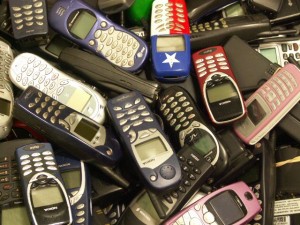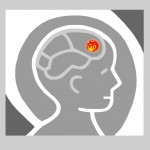Dr. Magda Havas presents this short video to illustrate the difference between “cherry picking” science and falsification or finding the “black swan”. She writes, “Some scientists are criticized for cherry picking their studies when in fact they are falsifying a hypothesis. Falsification, a concept coined by Sir Karl Popper (philosopher of science), is one of the methods that differentiates science from other forms of acquiring knowledge.”
Tag: doctors
Medical and Scientific Experts Call for Safe Technologies in Schools
A UK advocacy group, Wifiinschools.org.uk has recently published ‘Safe Schools 2012’. Medical and Scientific Experts Call for Safe Technologies in Schools.
Introduction:
“More Medical Associations, medical doctors and scientists, many of whom work on the biological effects of wireless technologies, have expressed their concerns about the safety of wireless devices for schools. They are asking for wired information and communication technologies to be used in order to safeguard children and young people, protect and promote healthy development and maximise learning and achievement.
These experts do not agree with the health protection agencies which currently support or allow the use of microwave, radiofrequency-emitting technologies by children and young people in schools.
Other authorities have also called for the protection of children from wireless technologies.
- Council of Europe: Mobile phone use by pupils in schools to be strictly regulated and wired internet connections to be preferred (Resolution 1815, 2011).
- World Health Organization’s International Agency for Research on Cancer (IARC) classified radiofrequency radiation as a possible human carcinogen, class 2B (2011).
- UK Trades Union Congress (TUC): Caution should be taken to prevent exposure to Class 2B carcinogens in the workplace.
- European Environment Agency: All reasonable measures to be taken to reduce exposures to electromagnetic fields, especially radiofrequencies from mobile phones and particularly the exposures to children and young adults. Current exposure limits to be reconsidered.
- International Commission for Electromagnetic Safety (ICEMS): Strongly advise limited use of cell phones, and other similar devices, by young children and teenagers.
- Russian National Committee on Non-Ionizing Radiation Protection have recommended the use of wired networks in schools and educational institutions, rather than wireless broadband systems, including Wi-Fi8 . “It is our professional obligation not to damage the children’s health by inactivity.”
- German Government and Israeli Parliament recommended wired computer networks for schools or workplaces.
- Several countries have advised children and young people to limit their use of mobile/smart/cell phones.
This document serves to inform schools, Governing Bodies, Academy Trusts, School Boards, Education Authorities, teachers and parents of the professional, medical and scientific concerns about children using wireless technologies in schools. The information can be used to implement safe school policies, practices and guidance in order to safeguard the health and development of children and young people and to aid cognitive abilities, learning and achievement.”
Open letter to the Premier from a doctor
The health complaints from wireless radiation utility smart meters are a global problem. Here’s an open letter to the Premier from a doctor in Victoria Australia:
Posted on Stop Smart Meters Australia:
22nd February 2012
To the Premier of Victoria
Mr Baillieu,
Since the completion of the smart meter roll-out in my area, I have been very, very sick. I have continuous palpitations, chest pain, a weird taste in my mouth, loss of appetite, lethargy, dizziness, faint attacks, inability to concentrate and complete insomnia.
I have the feelings at home, in the street, in all the streets of my area and at the shops. I am not able to function. I can’t work, I can’t look after my family, I need my husband, who is now the only breadwinner, to take care of me.
My symptoms only disappear when I am in an area without smart meters, in a large park or on the beach. When my husband drives me through the Melbourne suburbs, I tell him when I feel my symptoms abate, he stops the car and looks at house fronts and, sure enough, he sees the old-style meters. This can be reproduced very predictably.
We now have to sell our home and find a place to live, where I get few or no symptoms. In the long-term, we have no choice but to leave the state of Victoria, as even if I find a ‘symptom free’ home, my life would still be very limited, as I could not roam most streets, go to most shops, visit friends, work etc.
My family’s life has been completely ruined. We have lost everything we had worked for. My two teenage kids have to cope with the trauma and grief of the overwhelming loss that awaits us on a daily basis. I already can no longer work as a doctor, eventually my kids will have to leave their school, university, grandparents and friends behind.
This is all senseless and monstrous. Even in the big scheme of things, my life matters and so do the lives of those who depend on me, especially my family and friends, for whom I am not replaceable.
What happened to me was avoidable and clearly a breach of human rights – the right to health and the right not to be subjected to experimentation without my consent.
The community has never been consulted on the need for smart meters, or even well-informed. With the mandatory Victorian smart meter roll-out we will have irreversibly compromised those democratic values that have defined Australia so far.
Dr Federica Lamech
New report calls for protecting children and expecting mothers from cell phone radiation
 Environment and Human Health, Inc. (EHHI) released a cell phone environmental report calling for tougher standards to regulate cellular technologies—especially for children and pregnant women.
Environment and Human Health, Inc. (EHHI) released a cell phone environmental report calling for tougher standards to regulate cellular technologies—especially for children and pregnant women.
EHHI reviewed hundreds of peer-reviewed studies that examined the potential health threats associated with cellular device use, along with the regulatory standards that have been adopted by the U.S. and other nations.
John Wargo, Ph.D., professor of Environmental Risk and Policy at Yale University and lead author of the report, said, “The scientific evidence is sufficiently robust showing that cellular devices pose significant health risks to children and pregnant women. The weight of the evidence supports stronger precautionary regulation by the federal government. The cellular industry should take immediate steps to reduce emission of electromagnetic radiation (EMR) from phones and avoid marketing their products to children.”
EHHI President Nancy Alderman said, “Children between the ages of 8-18 spend an average of 7.5 hours per day—nearly half their hours while awake—on smart phones, computers, televisions or other electronic devices. Exposures to electromagnetic radiation are increasing most rapidly among the youngest in our society, as service providers focus their advertising on children and educational markets.”
Dr. Hugh Taylor, coauthor of the report, summarized his concerns regarding neurological effects from cell phone radiation. “The human brain is especially susceptible to numerous environmental insults that can produce irreversible damage during critical periods of nervous system development between conception and full maturity. A number of peer-reviewed studies reported changes in the nervous systems of rats, mice and humans following exposure to cell phone radiation. These include diminished learning, diminished reaction time, decreased motor function, reduced memory accuracy, hyperactivity and diminished cognition.”
Taylor explained differences in exposure between children and adults, “The thinner skulls of young children permit cell phone radiation to penetrate brain tissues more deeply than occurs in adults. Devices stored in pants pockets while in standby mode can expose rapidly developing reproductive organs to radiofrequency energy. Storage in shirt pockets will increase exposure to breast tissues. Children’s and fetuses’ rapidly developing nervous systems, more rapid rates of cell division, longer potential lifetime exposure, and longer average use per day all heighten their risks of adverse health effects.”
Wargo cautioned, “Cell phones have enjoyed exceptional freedom from government oversight and control to protect against health and environmental hazards before cell phone devices are marketed. There are no enforceable standards to limit human exposure to cell phone radiation. While the U.S. does not require any regulations to restrict advertising or warnings against use of cellular devices by pregnant women or children, many other nations do.”
Nancy Alderman, president of EHHI, summarized the group’s recommendations. “The government must take greater responsibility for testing cellular technologies before they are marketed to assure their safety, their proper disposal and to educate the public about safe patterns of use.”
American Academy of Environmental Medicine calls for a halt to wireless smart meters
 The American Academy of Environmental Medicine (AAEM) has adopted a resolution calling for a halt to wireless smart meters.
The American Academy of Environmental Medicine (AAEM) has adopted a resolution calling for a halt to wireless smart meters.
The text of the resolution is below. (link to AAEM Resolution on letterhead)
This represents the first national physician’s group to look in-depth at wireless health risks; and to advise the public and decision-makers about preventative public health actions that are necessary.
Cindy Sage
Sage Associates
January 19, 2012
Proposed Decision of Commissioner Peevey (Mailed 1/22/2012) BEFORE THE PUBLIC UTILITIES COMMISSION OF THE STATE OF CALIFORNIA On the proposed decision 11-03-014
Dear Commissioners:
The Board of the American Academy of Environmental Medicine opposes the installation of wireless “smart meters” in homes and schools based on a scientific assessment of the current medical literature (references available on request). Chronic exposure to wireless radiofrequency radiation is a preventable environmental hazard that is sufficiently well documented to warrant immediate preventative public health action.
As representatives of physician specialists in the field of environmental medicine, we have an obligation to urge precaution when sufficient scientific and medical evidence suggests health risks which can potentially affect large populations. The literature raises serious concern regarding the levels of radio frequency (RF – 3 KHz – 300 GHz) or extremely low frequency (ELF – o- 300 Hz) exposures produced by “smart meters” to warrant an immediate and complete moratorium on their use and deployment until further study can be performed. The board of the American Board of Environmental Medicine wishes to point out that existing FCC guidelines for RF safety that have been used to justify installation of “smart meters” only look at thermal tissue damage and are obsolete, since many modern studies show metabolic and genomic damage from RF and ELF exposures below the level of intensity which heats tissues. The FCC guidelines are therefore inadequate for use in establishing public health standards. More modern literature shows medically and biologically significant effects of RF and ELF at lower energy densities. These effects accumulate over time, which is an important consideration given the chronic nature of exposure from “smart meters”. The current medical literature raises credible questions about genetic and cellular effects, hormonal effects, male fertility, blood/brain barrier damage and increased risk of certain types of cancers from RF or ELF levels similar to those emitted from “smart meters”. Children are placed at particular risk for altered brain development, and impaired learning and behavior. Further EMF/RF adds synergistic effects to the damage observed from a range of toxic chemicals. Given the widespread, chronic and essentially inescapable ELF/RF exposure of everyone living near a “smart meter”, the Board of the American Academy of Environmental Medicine finds it unacceptable from a public health standpoint to implement this technology until these serious medical concerns are resolved. We consider a moratorium on installation of wireless “smart meters” to be an issue of the highest importance.
The Board of the American Academy of Environmental Medicine also wishes to note that the US NIEHS National Toxicology Program in 1999 cited radiofrequency radiation as a potential carcinogen. Existing safety limits for pulsed RF were termed “not protective of public health” by the Radiofrequency Interagency Working Group (a federal interagency working group including the FDA, FCC, OSHA, the EPA and others). Emissions given off by “smart meters” have been classified by the World Health Organization International Agency for Research on Cancer (IARC) as a Possible Human Carcinogen.
Hence, we call for:
• An immediate moratorium on “smart meter” installation until these serious public
health issues are resolved. Continuing with their installation would be extremely
irresponsible.
• Modify the revised proposed decision to include hearings on health impact in the
second proceedings, along with cost evaluation and community wide opt-out.
• Provide immediate relief to those requesting it and restore the analog meters.
Members of the Board
American Academy of Environmental Medicine
Admin note: The American Academy of Environmental Medicine, founded in 1965, is an international association of physicians and other professionals which “provides research and education in the recognition, treatment and prevention of illnesses induced by exposures to biological and chemical agents encountered in air, food and water.”
Top public health official report: Smart Meters DO pose a health risk!
Santa Cruz County, CA Board of Supervisors directed its public health officer to prepare an analysis of the research on the health effects of Smart Meters in December 2011. Poki Stewart Namkung, M.D. M.P.H., prepared this report: Health Risks Associated With SmartMeters which recognizes:
- Smart Meters transmit pulsed radiation (RF) 24/7
- There are evidence-based health risks of RF
- RF exposure can be cumulative and additive
- The massive increase in RF public exposures since the mid-1990’s
- The controversy between independent and industry science, including lack of funding for independent research
- Evidence to support an Electrical Sensitivity (EHS) diagnosis
- The public health issue is that Smart Meters are involuntary RF exposures
- FCC thermal guidelines are irrelevant for non-thermal public exposures.
- The lack of relevant safety standards for chronic pulsed RF
The report summary calls for more government vigilance towards involuntary RF public exposures because, “…governmental agencies are the only defense against such involuntary exposure.”
The report also provides examples of strategies to reduce RF including minimize cell and cordless phone use, use speakerphone when possible, use wired internet connections, avoid setting a laptop on your lap, and more.
Excerpts: “The public health issue of concern in regard to SmartMeters is the involuntary exposure of individuals and households to electromagnetic field (EMF) radiation.”
“There are numerous situations in which the distance between the SmartMeters and humans is less than three feet on an ongoing basis, e.g. a SmartMeter mounted on the external wall to a bedroom with the bed placed adjacent to that mounting next to the internal wall. ”
“…SmartMeters emit frequencies almost continuously, day and night, seven days a week.”
“… exposure is additive and consumers may have already increased their exposures to radiofrequency radiation in the home through the voluntary use of wireless devices …It would be impossible to know how close a consumer might be to their limit, making uncertainty with the installation of a mandatory SmartMeter. ”
“… all available, peer-reviewed, scientific research data can be extrapolated to apply to SmartMeters, taking into consideration the magnitude and the intensity of the exposure.”
“Since the mid-1990’s the use of cellular and wireless devices has increased exponentially exposing the public to massively increased levels of RF.”
” It must be noted that there is little basic science funding for this type of research and it is largely funded by industry.”
“…most research carried out by independent non-government or non-industry affiliated researchers suggests potentially serious effects from many non-ionizing radiation exposures, research funded by industry and some governments seems to cast doubt on the potential for harm.”
“Despite this controversy, evidence is accumulating on the results of exposure to RF at non-thermal levels including increased permeability of the blood-brain barrier in the head (Eberhardt, 2008), harmful effects on sperm, double strand breaks in DNA which could lead to cancer genesis (Phillips, 2011), stress gene activation indicating an exposure to a toxin (Blank, 2011), and alterations in brain glucose metabolism (Volkow, 2011). ”
“Currently, research has demonstrated objective evidence to support the EHS diagnosis…”
“Meeting the current FCC guidelines only assures that one should not have heat damage from SmartMeter exposure. It says nothing about safety from the risk of many chronic diseases that the public is most concerned about such as cancer, miscarriage, birth defects, semen quality, autoimmune diseases, etc. Therefore, when it comes to nonthermal effects of RF, FCC guidelines are irrelevant and cannot be used for any claims of SmartMeter safety unless heat damage is involved (Li, 2011). ”
“There are no current, relevant public safety standards for pulsed RF involving chronic exposure of the public, nor of sensitive populations, nor of people with metal and medical implants that can be affected both by localized heating and by electromagnetic interference (EMI) for medical wireless implanted devices.”
“Many other countries have significantly lower RF/MW exposure standards ranging from 0.001 to 50 ~W/cm2 as compared with the US guideline of 200-1 000 ~W/cm2”
“In summary, there is no scientific data to determine if there is a safe RF exposure level regarding its non-thermal effects.”
This is an excellent report and a must read for all public policy decision makers, and especially utility regulators. Many thanks to Dr. Stewart Namkung, the Santa Cruz Supervisors and to the EMF educators in their area! Please circulate!
International doctors criticize “Economist” article on wireless risks – call for retraction
 Experts in public health, oncology, neurosurgery, electronic engineering, toxicology, cardiology and epidemiology from the United Kingdom, USA, Finland, Sweden, Australia, Austria and the Slovak Republic have published a critique of an opinion piece published in The Economist: “Worrying about Wireless”.
Experts in public health, oncology, neurosurgery, electronic engineering, toxicology, cardiology and epidemiology from the United Kingdom, USA, Finland, Sweden, Australia, Austria and the Slovak Republic have published a critique of an opinion piece published in The Economist: “Worrying about Wireless”.
In the critique, entitled The Economist—and the Truth About Microwave Radiation Emitted from Wireless Technologies the experts say the Economist failed to provide critical information about the emerging public health issue related to cell phones and wireless technologies and that it owes its readers a better accounting of the science.
Ronald B. Herberman, MD, Founding Director Emeritus of the University of Pittsburgh Cancer Institute, Chairman of Environmental Health Trust and a distinguished cancer researcher, says of the Economist article, “The public the world over has been misled by this reporting.” “A disservice has been done in inaccurately depicting the body of science, which actually indicates that there are biological effects from the radiation emitted by wireless devices, including damage to DNA, and evidence for increased risk of cancer and other substantial health consequences.” Dr. Herberman adds, “It would behoove the Economist to publicly correct the errors made in this unsigned opinion piece by publishing a retraction—and investigating how such inaccurate and unbalanced scientific reporting could have occurred in the first place.”
Lennart Hardell, MD, PhD, Professor of Oncology, Orebro Medical Center, Orebro, Sweden, and a widely published, internationally renowned neuro-oncologist, agrees. He says, “The Economist has misrepresented the science indicating biological effects, links to cancers, and damage to DNA and male fertility from exposures to microwave radiation emitted by wireless technologies. Given the wide scale use of cell phones and other wireless devices globally, for the sake of public health I consider it essential that The Economist’s reporting be corrected to adequately advise readers of the risks.”
Dr. Hardell’s research has repeatedly found increased risk of brain cancers in frequent users of cell phones and/or cordless phones for more than a decade. His team’s research was cited in May in the World Health Organization’s International Agency for Research on Cancer (IARC) landmark decision to classify wireless radiation as a Class 2B ‘Possible Carcinogen’.
Media advisory courtesy Electromagnetic Health.org
Dr. Slesin: Cell phone study safety claims: “bias run amuck”
The latest analysis of the tumor risks among cell phone users in Denmark and the accompanying editorial brings to mind the old saying: “Trust your mother, but cut the cards.”
Be warned: Before you believe what you are told by the Danish Cancer Society or the Karolinska Institute or what you read in the British Medical Journal, check out the facts for yourself.
As for IARC, there seems to be an internal dispute going on as to whether it should take seriously its own panel’s decision to designate cell phone radiation as a possible cancer agent. It’s not clear what side IARC Director Chris Wild is on.
Read our in-depth report on the latest example of bias run amuck on cell phones and tumors: http://www.microwavenews.com/DanishCohort.html
